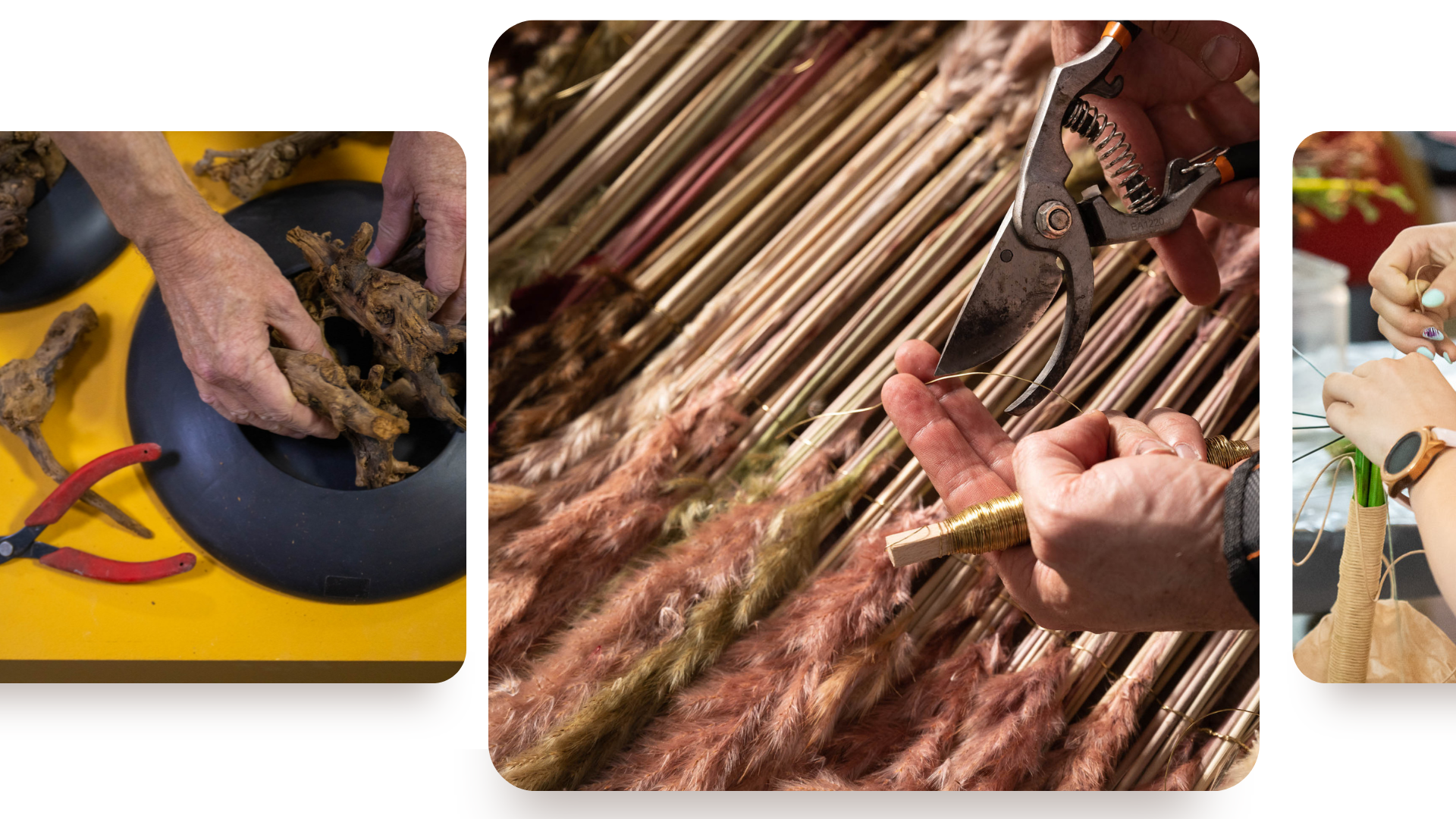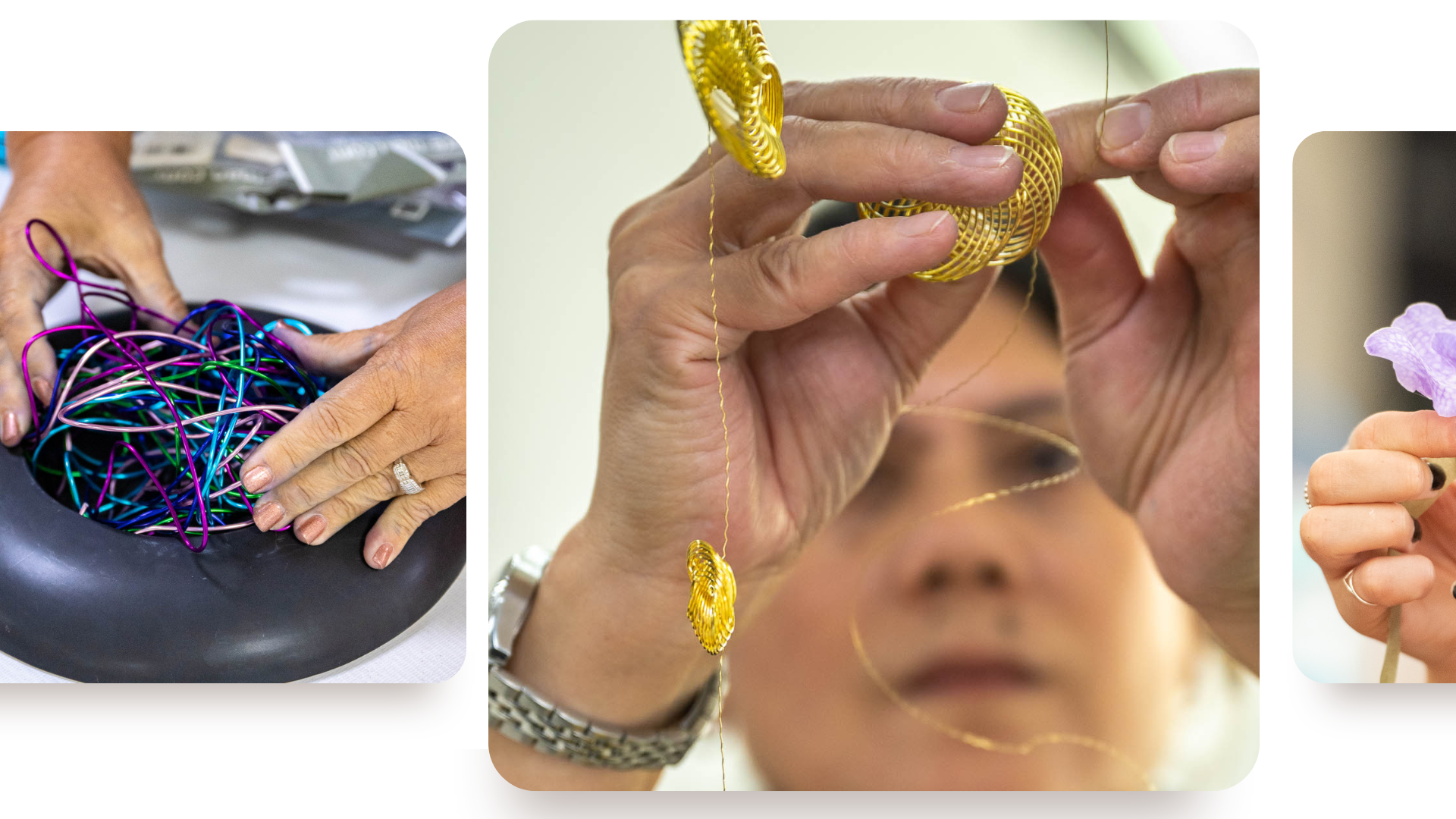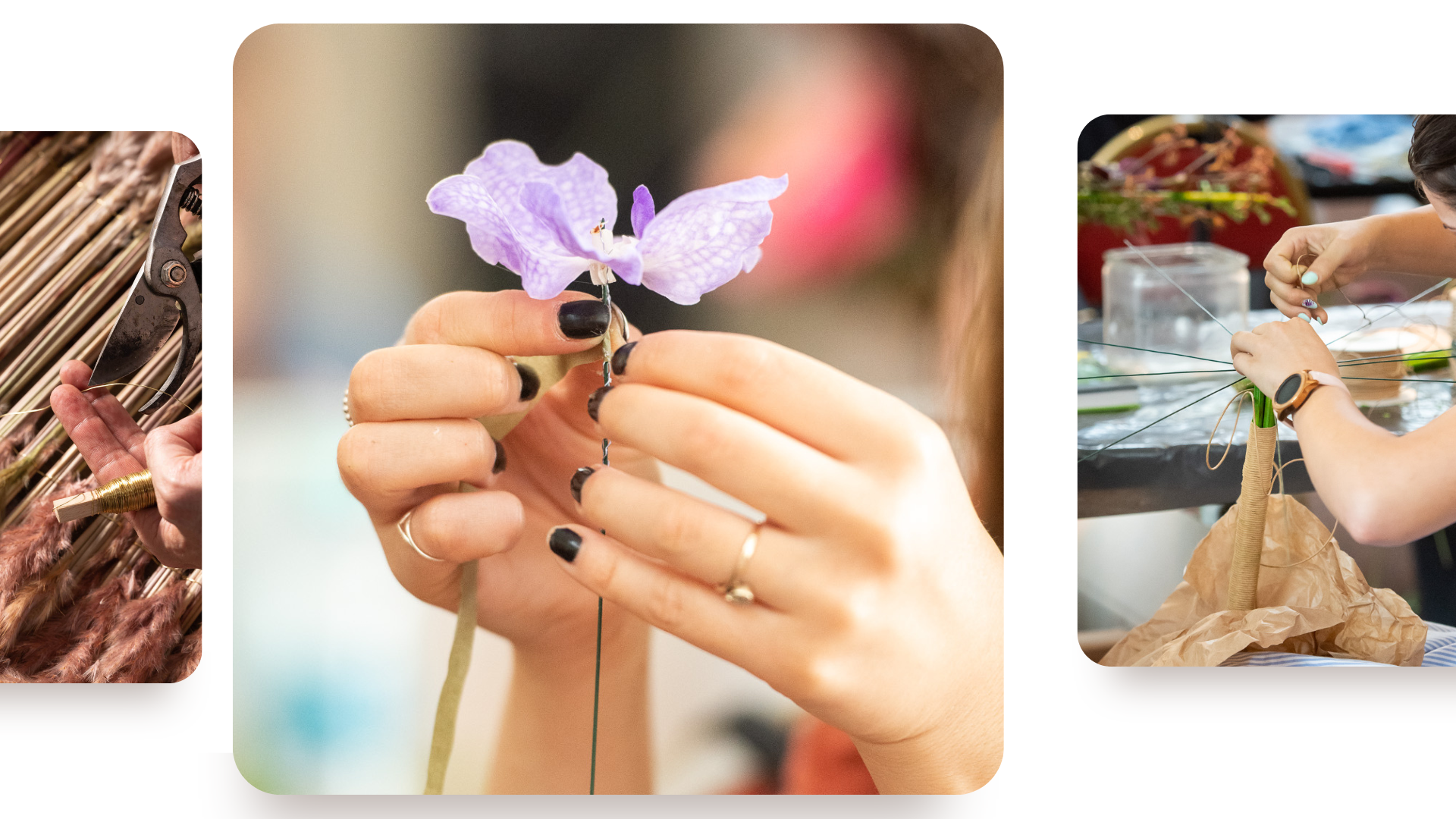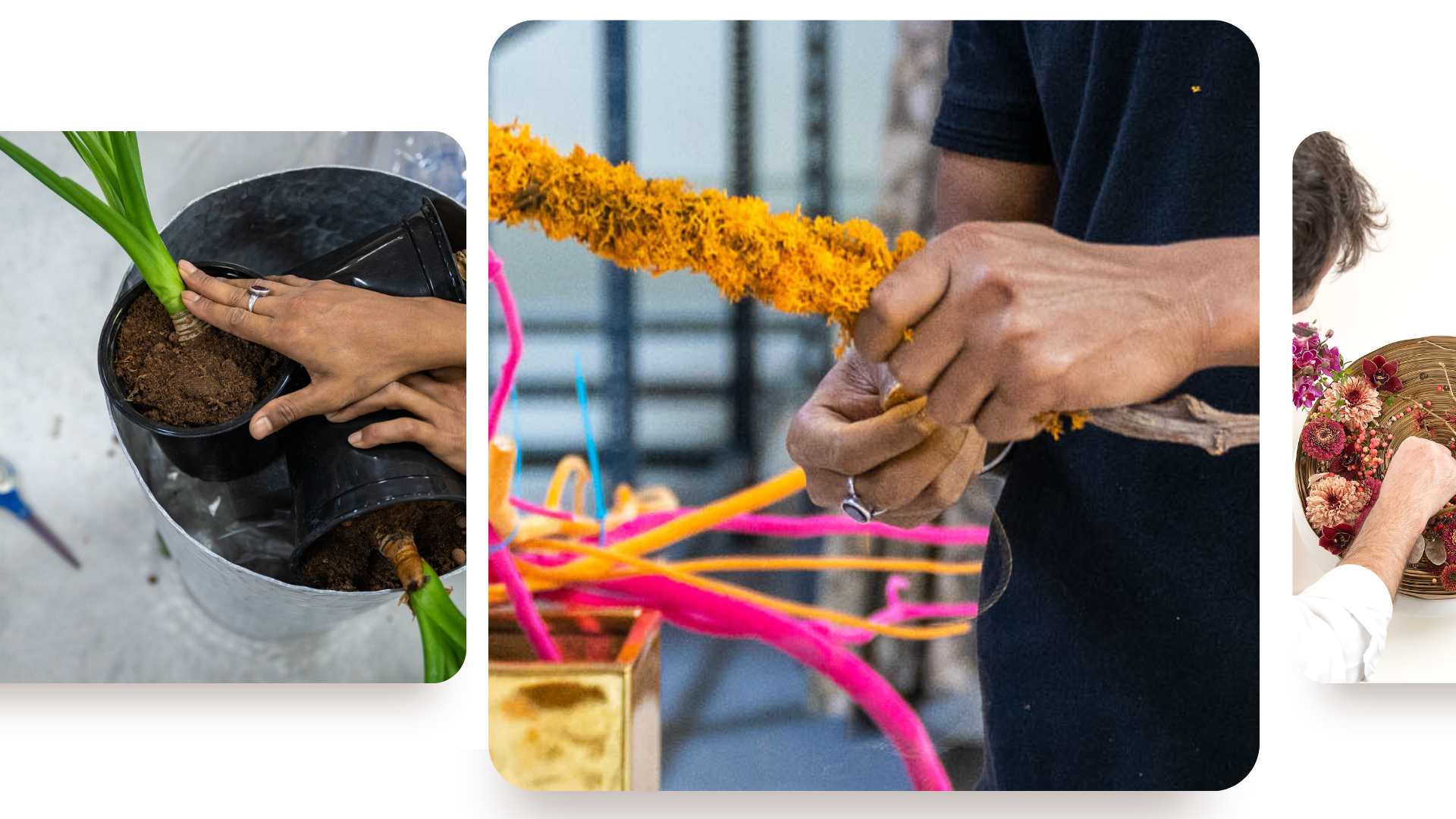
Enhancing Creativity and Execution
Jul 23, 2023Techniques
What are they and how can we master them?
Techniques in floral design refer to the various actions employed to execute a particular task in creating an artistic work. They play a vital role in the design process, allowing designers to transform their ideas into reality and enhance the overall quality of their creations. By understanding and consciously applying techniques, designers can expand their skills, explore new possibilities, and create unique expressions adaptable to different situations. Techniques in floral design are the building blocks that empower designers to bring their ideas to life. Techniques in floral design are the building blocks that empower designers to bring their ideas to life. By mastering techniques, designers can elevate their creativity and enhance the quality of their work.
To increase your repertoire of techniques, practice and theory are essential. Through consistent practice, you can refine your skills and gain proficiency in executing different actions such as wrapping, weaving, binding, manipulating, and piercing. Theory, on the other hand, provides valuable knowledge and insights into the principles behind each technique, enabling you to make informed decisions about their application.

It is important to realize that there may not be many entirely new techniques in floral design, but the way we approach, implement, and combine them can result in fresh and exciting outcomes. By recognizing the potential of different techniques, designers can unlock new possibilities and push the boundaries of their craft. The goal is to identify the most suitable techniques and mechanics for each project, considering factors like cost, concept composition, materials, and time constraints.
Techniques not only impact the execution of a design but also greatly influence its style and can potentially contribute to trends within the floral industry. As trends evolve, new combinations of techniques emerge, offering designers the opportunity to create innovative and captivating arrangements. In today's floristry, designers are encouraged to constantly seek new ways and means to make their artistic statements. The focus is on creating added value to flowers by skilfully combining them with complementary colours, shapes, and design elements.
By deepening your understanding of techniques and expanding your technical knowledge, you open up unlimited design possibilities. The conscious application of techniques allows you to make well-informed choices and execute your ideas with precision and finesse. Each technique you learn adds to your creative toolbox, inspiring experimentation, continuous practice, and a never-ending quest for discovering new combinations and applications.

Techniques play a fundamental role, much like in any other art form. They are the actions that bring a creative idea to life, allowing us to turn mere imagination into tangible and enjoyable products. Techniques are crucial decision-making factors throughout the design process, enabling us to transform ideas into reality. The quality of our choices as designers significantly influences the final outcome.
By carefully selecting the most suitable techniques and executing them with different mechanics, we can greatly enhance the end result. As our technical knowledge grows, our design possibilities become boundless, as evidenced by the exponential increase in potential combinations between techniques, mechanics, materials, and botanical elements. When incorporating the elements and principles of design, the possibilities truly become infinite. This begs the question:
Which technique should be used for a specific task?

The answer depends on the desired outcome and the guiding principles behind the design concept. In our EMC course, we delve deeply into this topic, recognizing its significance as more than just a passing trend in floral education. It is a vital aspect of the decision-making process in design.
Examples of techniques are abundant, highlighting the intricate and complex nature of the world of floral design. The network of possible connections between techniques resembles the intricate workings of the human brain, with infinite combinations and interactions between elements. Techniques themselves can be harnessed to create powerful visual impacts. Creativity, like a muscle, requires practice, change in mindset, effort, and perseverance to develop. However, we often observe that many florists and designers confine themselves to a limited set of known techniques, sometimes mastered, residing comfortably within their creative comfort zones. Yet, true creativity rarely blossoms within these boundaries.

Techniques are mere tools for putting our ideas into practice. They should support our imagination, and designers should not restrict their ideas by clinging to a few learned and mastered techniques.
Once you elevate a technique to this level, you become an infinitely creative designer capable of executing all your ideas—an effect we refer to as the ICE effect at EMC.
Challenge yourself when it comes to techniques. Conduct a SWOT analysis (strengths, weaknesses, opportunities, and threats) of a technique. Identify its physical strengths and balance aesthetics to achieve your desired design outcome. Similarly, explore its weaknesses and determine the best opportunities to utilize it. Consider if combining it with another technique creates added value and leads to new outcomes. Additionally, explore alternative implementations of the technique.
Unleash your creativity and embrace the potential of the techniques you learn.

Explore their possibilities individually and in combination with others. Keep experimenting to stay inspired. Practice consistently and motivate yourself to continuously discover new combinations and applications of techniques. Infuse your knowledge with passion and unleash your creativity!
pictures by Alex Mateiu
Don't miss a beat!
New blogs, course offerings and what we are up to delivered to your inbox!
We hate SPAM. We will never sell your information, for any reason.

